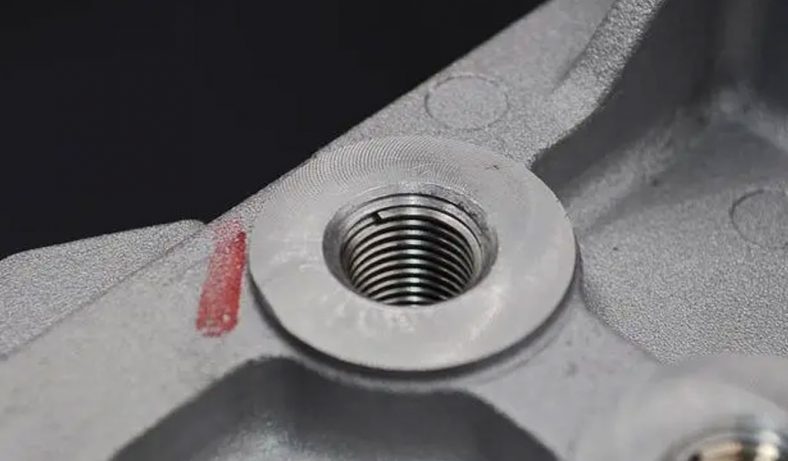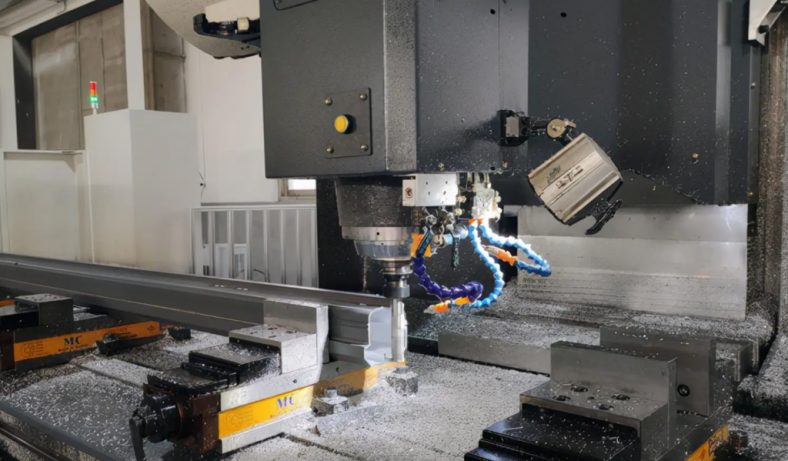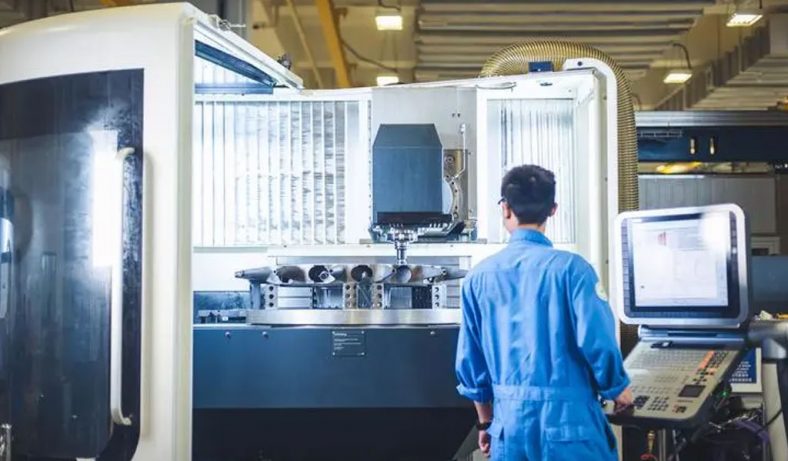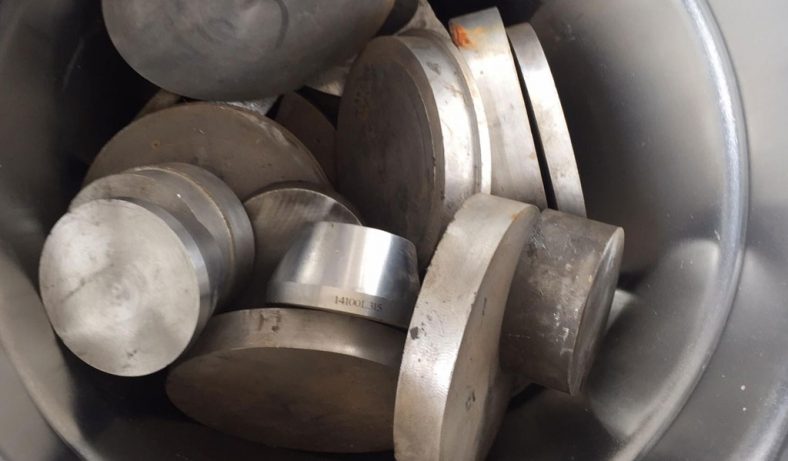Threaded holes are a fundamental element in the world of manufacturing, serving as the primary means of fastening components together securely. Whether in automotive, aerospace, machinery, or consumer electronics, threaded holes play a vital role in maintaining structural integrity and assembly efficiency. In this comprehensive article, we will explore the various methods used for manufacturing threaded holes, along with the standard practices for calling them out in technical drawings and specifications.

Importance of Threaded Holes in Manufacturing
Threaded holes are integral to the design and assembly of countless products across industries. They allow for the secure attachment of components, enabling the construction of complex structures and mechanisms. Threaded holes can be found in everyday items like furniture, electronic devices, and custom automotive parts, as well as in critical components used in aerospace, medical devices, and machinery. The effectiveness of threaded holes directly impacts the overall performance, safety, and longevity of the final product.
Manufacturing Threaded Holes
1.Drilling and Tapping
Drilling and tapping is one of the most common and traditional methods for creating threaded holes. This method is widely used for materials such as metal, plastic, and wood, where a standard thread profile is employed, such as the Unified Thread Standard (UTS) or metric thread. The process involves two main steps:
- Drilling: A drill is used to create a through-hole or a blind hole in the material, depending on the specific application requirements. The size and depth of the hole are determined based on the intended fastener and the design specifications.
- Tapping: After drilling the hole, a tap is inserted and rotated to cut threads into the hole’s walls. Taps are cutting tools with helical flutes, and they come in various styles, including hand taps, machine taps, spiral-point taps, and spiral-flute taps.
The drilling and tapping method is relatively straightforward and can be performed using manual tools or automated machinery, making it suitable for both small-scale and mass production.
2.Thread Rolling
Thread rolling is a cold-forming process used to manufacture threads in ductile materials, especially for high-strength applications. This method offers several advantages over traditional cutting methods:
- Increased Strength: Thread rolling displaces material instead of cutting it, resulting in improved thread strength, particularly in high-stress applications.
- Improved Surface Finish: The cold-forming process creates a smooth thread surface with less risk of burrs or imperfections.
- High Production Rates: Thread rolling can be performed at high speeds, making it a cost-effective solution for large-scale manufacturing.
There are two main types of thread rolling:
- a) In-feed Thread Rolling: In this method, the workpiece is fed into the rolling dies, and the threads are gradually formed along the length of the hole. In-feed thread rolling is suitable for long threads.
- b) Through-feed Thread Rolling: In through-feed thread rolling, the workpiece is continuously fed through the rolling dies, producing threads on the entire length of the part. This method is more appropriate for shorter threads or when the threading needs to be performed in a single pass.
Thread rolling is commonly used in industries where high-quality threads with superior strength are required, such as automotive and aerospace applications.
3.Thread Milling
Thread milling involves using a multi-toothed cutting tool called a thread mill to generate threads. This method is highly versatile, as it can produce both internal and external threads, as well as various thread profiles. Thread milling is often used for specialized applications or when the threads require precise tolerances. Key advantages of thread milling include:
- Versatility: Thread milling can create threads with different diameters, pitches, and profiles, offering a wide range of options for various applications.
- High Accuracy: CNC machines are commonly used for thread milling, ensuring precise and accurate results, especially for critical components.
- Reduced Tool Inventory: Since a single thread mill can be used to create multiple thread sizes and profiles, it reduces the need for extensive tool inventories.
Thread milling is commonly used in the aerospace, medical, and automotive industries, where precise threads are essential for performance and safety.
4.Thread Cutting
Thread cutting is a method wherein a single-point cutting tool, such as a lathe tool or a die, is used to remove material and create threads. This method is suitable for low-volume production and is commonly employed for large-diameter threads or special thread profiles.
There are two main types of thread cutting:
- a) Single-point Threading: In single-point threading, a cutting tool is passed through the rotating workpiece, cutting the threads as it moves along the axial direction. This method is commonly used in lathes to create external threads.
- b) Thread Die Cutting: Thread die cutting is used for creating external threads on cylindrical workpieces. A die is a specialized tool with threads on the inside that is pressed against the workpiece to form the threads.
Thread cutting is often used in repair and maintenance applications or for custom thread profiles not easily achieved through other methods.
Thread Callout in Technical Drawings
Threaded holes need to be accurately represented in technical drawings and specifications to ensure proper manufacturing and assembly. This is achieved through a standardized thread callout system that communicates vital information about the thread characteristics. A properly formatted thread callout should include the following essential details:
1.Thread Size and Pitch
The first step in calling out a threaded hole is to specify the thread size and pitch. For example, if the hole uses a standard Unified Thread Standard (UTS) with a ¼-inch diameter and 20 threads per inch, it would be denoted as “¼-20 UNC.” The abbreviation “UNC” stands for Unified National Coarse, which refers to the thread series and pitch.
For metric threads, the callout would include the nominal diameter and pitch, such as “M12 x 1.5.” In this example, “M12” refers to the nominal diameter, while “1.5” denotes the thread pitch in millimeters.
2.Thread Class
Threads are classified into different classes based on their tolerance and fit. The most common thread classes are 1A, 2A, 3A for external threads and 1B, 2B, 3B for internal threads. The higher the number, the looser the tolerance. For instance, “¼-20 UNC 2B” indicates a ¼-inch diameter, 20 TPI Unified National Coarse thread with a 2B internal thread class. The thread class is crucial for ensuring proper fit between threaded components.
3.Thread Depth and Length
The depth of the threaded hole refers to how far the thread goes into the material. It is essential to call out the desired thread depth to avoid any confusion during manufacturing. Additionally, specify the length of the threaded portion if it does not extend to the full depth of the hole. This information helps ensure that the mating fasteners engage with the threads correctly.
4.Thread Relief
Thread relief is a small unthreaded portion at the bottom of the hole, allowing easy entry for screws or bolts. It is often necessary to avoid interference between the thread’s crest and the mating fastener. The presence or absence of thread relief should be explicitly indicated in the thread callout.
5.Material and Finish
The material of the component and the desired thread finish can also be specified in the thread callout. Common thread finishes include black oxide, zinc plating, or anodizing. Additionally, materials like stainless steel, aluminum, brass, or various types of plastics might have different thread performance characteristics, making it essential to call out the correct material for the threaded hole.
6.Thread Direction
The direction of the threads should be indicated in the thread callout. Threads can be either right-handed (clockwise) or left-handed (counterclockwise). This information is particularly crucial when dealing with specialty applications or unique assemblies.
Best Practices and Considerations
1.Material Selection
The choice of material for the component plays a significant role in determining the thread’s performance and durability. Factors such as material strength, corrosion resistance, and thermal properties should be carefully considered during the design phase. For example, stainless steel is often chosen for its corrosion resistance, while high-strength alloys might be selected for demanding applications.
2.Threaded Hole Alignment
Accurate alignment of threaded holes is crucial for proper assembly. Misaligned threads can lead to cross-threading or difficulty in fastening components together. Ensuring proper alignment can be achieved through precise machining and careful assembly practices. Advanced technologies, such as CNC machining, can help achieve high precision and alignment consistency.
3.Thread Reinforcement
In certain applications where threads are subjected to heavy loads or repeated assembly and disassembly, thread reinforcement methods may be necessary to strengthen the threaded holes and prevent wear. Helicoil inserts, for example, are coiled wire inserts that are installed into damaged or stripped threads to provide a robust threaded surface. Threaded inserts made of steel, brass, or other materials can also be used to add strength to threaded holes.
4.Quality Control and Inspection
Implementing a robust quality control process is essential to ensure that manufactured components meet the specified thread requirements. Regular inspection of the threaded holes using appropriate measuring tools, such as thread gauges and micrometers, will help identify any deviations from the intended dimensions. Quality control checks during the production process help prevent defects and ensure the overall quality and performance of the threaded holes.
5.Lubrication and Cooling
Appropriate lubrication and cooling are crucial during the thread manufacturing process to prevent tool wear, reduce friction, and improve thread surface finish. Lubricants and coolants help in chip removal, reducing the risk of tool breakage and improving the efficiency of the threading operation.
6.Thread Standards
Depending on the region and industry, various thread standards may be employed. The most common thread standards include the Unified Thread Standard (UTS) used in the United States, the British Standard Whitworth (BSW) used in the United Kingdom, and the International Standard ISO metric threads. It is essential to ensure that the correct thread standard is followed to maintain compatibility with mating components and international manufacturing practices.
Advanced Thread Manufacturing Techniques
1.Cold Forming
Cold forming is a high-speed manufacturing process that involves shaping metal at room temperature. In the context of threaded holes, cold forming can be utilized to create threads without the need for chip removal, resulting in stronger threads with improved fatigue resistance. The process is particularly beneficial for high-strength materials and is commonly used in the production of screws, bolts, and fasteners.
2.Electrochemical Machining (ECM)
Electrochemical machining is a non-traditional manufacturing process that uses electrical energy to remove material from the workpiece. ECM is particularly useful for complex and intricate threads, as it allows for high precision and eliminates the risk of tool wear. The process is also beneficial for hard-to-machine materials, such as superalloys and heat-resistant materials, commonly used in aerospace and gas turbine components.
View Related Posts: ECM vs EDM
3.Additive Manufacturing (3D Printing)
Additive manufacturing, or Plastic or Metal 3D printing, is a rapidly evolving technology that enables the creation of complex geometries, including internal threads, directly from digital designs. Metal 3D printing methods, such as selective laser melting (SLM) or electron beam melting (EBM), are gaining popularity for manufacturing customized parts with intricate threaded holes. However, the strength and performance of 3D-printed threads may not yet match those produced using traditional methods.
4.Hybrid Manufacturing
Hybrid manufacturing combines traditional subtractive techniques, such as milling or turning, with additive manufacturing processes. In the context of threaded holes, hybrid manufacturing can be employed to additively build a near-net shape of the component and then finish it with precision machining to achieve accurate threads. This approach allows for increased design freedom and faster production of complex components with threaded features.
Importance of Proper Thread Callout
The proper callout of threaded holes in technical drawings and specifications is of utmost importance for successful manufacturing and assembly. Clear and accurate thread callouts prevent confusion and ensure that the finished product meets the intended design requirements. Here are some key reasons why proper thread callout is crucial:
- Interchangeability and Compatibility: Standardized thread callouts ensure that components with mating threads from different manufacturers can be easily interchanged without compromising the fit and function.
- Assembly Efficiency: Proper thread callouts help assembly personnel select the correct fasteners, reducing the risk of mismatched components and time-consuming troubleshooting during assembly.
- Quality and Performance: Accurate thread callouts ensure that the threaded holes meet the necessary tolerances, promoting reliable performance and long-term durability of the final product.
- Safety and Reliability: In safety-critical applications, such as aerospace or automotive, precise thread callouts are essential for maintaining the integrity of the assembly and preventing potential failures.
Challenges and Solutions in Thread Manufacturing
Despite the advancements in thread manufacturing techniques, several challenges may arise during the production of threaded holes. Some common challenges include:
- Material Selection: Choosing the appropriate material with the right properties for the threaded hole application is crucial for ensuring the component’s performance and longevity.
- Tool Wear: Cutting tools used in traditional thread manufacturing methods can experience wear over time, leading to decreased thread quality and reduced tool life. Regular maintenance and tool replacements can help mitigate this issue.
- Thread Form Errors: Accurate thread form is critical to ensure proper mating with fasteners. Deviations from the intended thread form may result in improper fit and reduced component performance.
- Thread Galling: Galling is a form of wear that can occur between threaded components, leading to seizing or locking of the fasteners. Proper lubrication, appropriate thread surface finish, and compatible material combinations can help prevent thread galling.
Custom Parts, Fast–Start Your Next Project With Be-Cu
Threaded holes are a critical aspect of modern manufacturing, serving as a means of securely fastening components together. Various methods are available for creating threaded holes, each suited for specific materials and applications. Accurate thread callout in technical drawings is vital to ensure successful manufacturing and proper assembly. By following the best practices and considering key factors during the design and manufacturing stages, threaded holes can be produced to meet the highest standards of quality and reliability. The proper selection of thread manufacturing methods, material choices, and adherence.
For all your CNC machining and finishing needs,Be-Cu has you covered. We’re experts at producing custom CNC machined tight tolerance parts, in a variety of materials, and we simplify custom part sourcing with intelligent, streamlined, automated workflows. Be-Cu.com is your operating system for custom manufacturing that makes part procurement faster, easier, and more efficient.
-

How to Calculate CNC Machining Cost & Prices
-

Top 30 CNC Machining Companies and Manufacturers in USA
-

Thread Pitch: Understanding Definition, Measurement, Types, and Utilizing Thread Pitch (TPI) Charts
-

The Comprehensive Guide to Flat Washer Size Charts, Types, Materials, Use, and Weight Calculation
-

The Value of CNC Swiss Turning in Medical Device Manufacturing
-

CNC Machining Metallic Zirconium : The Basic Guide You Need To Know
